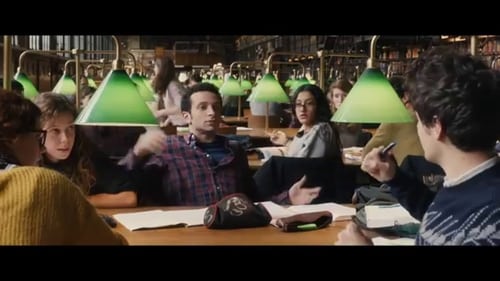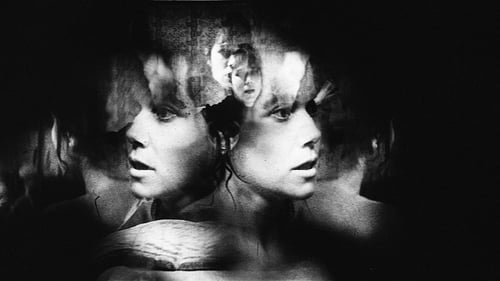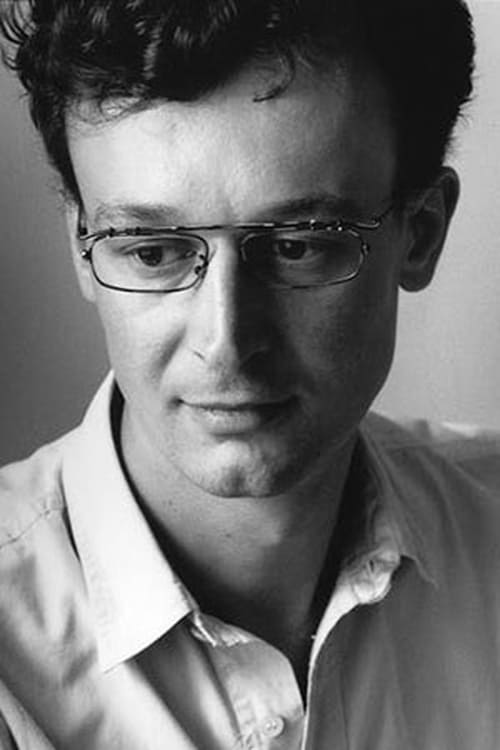Peter Tscherkassky
Nascimento : 1958-10-03, Vienna, Austria
História
Peter Tscherkassky is an Austrian avant-garde filmmaker who currently works exclusively with found footage. All of his work is done with film and heavily edited in the darkroom, rather than relying on technological modes. Tscherkassky not only presents beautiful and haunting images, but also forces the audience to rethink the traditional conception of film and film narrative.

Editor
Um passeio pela sala de máquinas da sétima arte, uma cerimônia da mecânica violenta dos veículos ferroviários e dos transportadores de imagem. Tscherkassky folheia a história da vanguarda cinematográfica, concebendo seu trabalho como uma mistura de referências do panteão do cinema visionário.

Producer
Um passeio pela sala de máquinas da sétima arte, uma cerimônia da mecânica violenta dos veículos ferroviários e dos transportadores de imagem. Tscherkassky folheia a história da vanguarda cinematográfica, concebendo seu trabalho como uma mistura de referências do panteão do cinema visionário.

Writer
Um passeio pela sala de máquinas da sétima arte, uma cerimônia da mecânica violenta dos veículos ferroviários e dos transportadores de imagem. Tscherkassky folheia a história da vanguarda cinematográfica, concebendo seu trabalho como uma mistura de referências do panteão do cinema visionário.

Director
Um passeio pela sala de máquinas da sétima arte, uma cerimônia da mecânica violenta dos veículos ferroviários e dos transportadores de imagem. Tscherkassky folheia a história da vanguarda cinematográfica, concebendo seu trabalho como uma mistura de referências do panteão do cinema visionário.

Himself
This historical and analytical documentary draws attention to the background of the roots of "New Austrian Cinema" and presents Austria as a film country to be taken seriously.
The audience gets to see rare early works by well-known filmmakers as well as shots of landscapes that served as a source of inspiration and locations that have produced important Austrian films since the end of the 19th century.

Lui-même

Editor
The Exquisite Corpus is based on various erotic films and advertising rushes. Myriad fragments are melted into a single sensuous, humorous, gruesome, and ecstatic dream.

Director
The Exquisite Corpus is based on various erotic films and advertising rushes. Myriad fragments are melted into a single sensuous, humorous, gruesome, and ecstatic dream.

Editor
A film woven around the idea that between early cinema and avant-garde film exists a connection.

Writer
A film woven around the idea that between early cinema and avant-garde film exists a connection.

Director
A film woven around the idea that between early cinema and avant-garde film exists a connection.

Director
Wolfgang Amadeus Mozart, according to his biographers (and his letters confirm this fact), was an extremely sensuous person, and Nachtstück (Nocturne) was intended to refer to this aspect of his personality: We glide into "Eine kleine Nachtmusik" a bit, then abandon standardized paths of conventional representational film and encounter a few seconds of passionate sensory filmæan example of something I would like to call "physical cinema." The thesis: Herr Mozart would have enjoyed it.

Director
Twenty-eight well-known filmmakers living and working in Austria were invited by WIENER MOZARTJAHR 2006, to produce associative miniatures on Mozart. Requirement: they had to be one-minute artistic short films. The directors come from a whole range of different backgrounds, ranging from animated, experimental and short film to documentaries and feature films. The result is a multi-facetted sampler of diverse formal and contextual positions with regard to Mozart’s person and his influence on today’s society, art and culture. The contributions run the gamut from experimental-conceptual statements through socio-critical and documentary observations to pithy short feature films.

Editor
An attempt to transform a Roman Western into a Greek tragedy.

Director
An attempt to transform a Roman Western into a Greek tragedy.

Director
A collection of short experimental horror films, some well-known, some not.

Director
Uma mulher vai para a cama, adormece e começa a sonhar. Este sonho leva-a a uma paisagem de luz e sombra, evocada numa forma apenas possível através da cinematografia clássica.

Director of Photography
Uma tela branca. Tabula rasa. Panavisão. L’Arrivée nos ilumina como uma pura luz de projeção, como se a superfície branca ainda estivesse esperando as marcas do cineasta.

Writer
Uma tela branca. Tabula rasa. Panavisão. L’Arrivée nos ilumina como uma pura luz de projeção, como se a superfície branca ainda estivesse esperando as marcas do cineasta.

Producer
Uma tela branca. Tabula rasa. Panavisão. L’Arrivée nos ilumina como uma pura luz de projeção, como se a superfície branca ainda estivesse esperando as marcas do cineasta.

Director
Uma tela branca. Tabula rasa. Panavisão. L’Arrivée nos ilumina como uma pura luz de projeção, como se a superfície branca ainda estivesse esperando as marcas do cineasta.

Director
Imagens encontradas em um filme. De uma cena idílica no mar, Tscherkassky passa para um carro veloz dirigindo pela noite. O movimento radical de objetos, corpos e sentidos ilustra o poder do cinema.

Sound
Trata-se de uma disfunção cinematográfica chocante; um cinema vanguardista provocador. Outer Space evoca um inferno que busca a destruição (da narrativa cinematográfica e ilusão) com beleza inimaginável.

Director of Photography
Trata-se de uma disfunção cinematográfica chocante; um cinema vanguardista provocador. Outer Space evoca um inferno que busca a destruição (da narrativa cinematográfica e ilusão) com beleza inimaginável.

Editor
Trata-se de uma disfunção cinematográfica chocante; um cinema vanguardista provocador. Outer Space evoca um inferno que busca a destruição (da narrativa cinematográfica e ilusão) com beleza inimaginável.

Producer
Trata-se de uma disfunção cinematográfica chocante; um cinema vanguardista provocador. Outer Space evoca um inferno que busca a destruição (da narrativa cinematográfica e ilusão) com beleza inimaginável.

Writer
Trata-se de uma disfunção cinematográfica chocante; um cinema vanguardista provocador. Outer Space evoca um inferno que busca a destruição (da narrativa cinematográfica e ilusão) com beleza inimaginável.

Director
Trata-se de uma disfunção cinematográfica chocante; um cinema vanguardista provocador. Outer Space evoca um inferno que busca a destruição (da narrativa cinematográfica e ilusão) com beleza inimaginável.

Director
A found footage film about rituals, festive occasions and a married couple in a seeming frenzy of cosy togetherness. We see the pair pouring drinks, cutting cakes, making toast. Finally the exuberant movement of the dancing woman freezes.

Director
On the 28th of October 1884 Daniel Paul Schreber, candidate of the National Liberal Party in Chemnitz, suffered a heavy defeat at the elections of the German Reichstag. He was taken up in the mental clinic of the Leipzig University soon afterwards. To his rehabilition he wrote an extensive piece of work, "Denkwürdigkeiten eines Nervenkranken" (Memoirs of My Nervous Illness), which was published in 1903 and led to his temporary dismissal. Hereby Schreber became the most quoted psychiatric patient in scientific literature.

On the 28th of October 1884 Daniel Paul Schreber, candidate of the National Liberal Party in Chemnitz, suffered a heavy defeat at the elections of the German Reichstag. He was taken up in the mental clinic of the Leipzig University soon afterwards. To his rehabilition he wrote an extensive piece of work, "Denkwürdigkeiten eines Nervenkranken" (Memoirs of My Nervous Illness), which was published in 1903 and led to his temporary dismissal. Hereby Schreber became the most quoted psychiatric patient in scientific literature. The third part was realized by Peter Tscherkassy based on a concept by Ernst Schmidt Jr.

Director of Photography
On the 28th of October 1884 Daniel Paul Schreber, candidate of the National Liberal Party in Chemnitz, suffered a heavy defeat at the elections of the German Reichstag. He was taken up in the mental clinic of the Leipzig University soon afterwards. To his rehabilition he wrote an extensive piece of work, "Denkwürdigkeiten eines Nervenkranken" (Memoirs of My Nervous Illness), which was published in 1903 and led to his temporary dismissal. Hereby Schreber became the most quoted psychiatric patient in scientific literature. The third part was realized by Peter Tscherkassy based on a concept by Ernst Schmidt Jr.

Director
On the 28th of October 1884 Daniel Paul Schreber, candidate of the National Liberal Party in Chemnitz, suffered a heavy defeat at the elections of the German Reichstag. He was taken up in the mental clinic of the Leipzig University soon afterwards. To his rehabilition he wrote an extensive piece of work, "Denkwürdigkeiten eines Nervenkranken" (Memoirs of My Nervous Illness), which was published in 1903 and led to his temporary dismissal. Hereby Schreber became the most quoted psychiatric patient in scientific literature. The third part was realized by Peter Tscherkassy based on a concept by Ernst Schmidt Jr.

Sound Designer
Parallel Space: Inter-View is made with a photo camera. A miniature photo is exactly the size of two film frames. Optically it resembles a flickering double exposure; the former temporal and spatial unity disintegrates into pieces which have a correspondence with each other. (Peter Tscherkassky) Photographic processes - the material transformations involved in recording, developing, printing and projecting - functions as metaphors for psychological processes.

Parallel Space: Inter-View is made with a photo camera. A miniature photo is exactly the size of two film frames. Optically it resembles a flickering double exposure; the former temporal and spatial unity disintegrates into pieces which have a correspondence with each other. (Peter Tscherkassky) Photographic processes - the material transformations involved in recording, developing, printing and projecting - functions as metaphors for psychological processes.

Director
Parallel Space: Inter-View is made with a photo camera. A miniature photo is exactly the size of two film frames. Optically it resembles a flickering double exposure; the former temporal and spatial unity disintegrates into pieces which have a correspondence with each other. (Peter Tscherkassky) Photographic processes - the material transformations involved in recording, developing, printing and projecting - functions as metaphors for psychological processes.

Director
The target of Tabula Rasa is the heart of cinema. Voyeuristic desire as the pre-condition for all cinema pleasure is at stake here. What Christian Metz and Jacques Lacan have established in theory is rendered as film in Tabula Rasa. At the beginning we can recognize only shadows from which the picture of a woman undressing herself hesitantly emerges. But exactly at the point when one believes one can make out what it is, the camera is located in front of the object. Tabula Rasa takes distance, the fundamental principle of voyeurism, in so far literally, as it shows us the object of desire but continually removes it from our gaze.

Art Designer
On the 28th of October 1884 Daniel Paul Schreber, candidate of the National Liberal Party in Chemnitz, suffered a heavy defeat at the elections of the German Reichstag. He was taken up in the mental clinic of the Leipzig University soon afterwards. To his rehabilition he wrote an extensive piece of work, "Denkwürdigkeiten eines Nervenkranken" (Memoirs of My Nervous Illness), which was published in 1903 and led to his temporary dismissal. Hereby Schreber became the most quoted psychiatric patient in scientific literature. This second part was finished after Ernst Schmidt Jr. death by his assistant Susi Praglowski.

Director
Not a stage direction, but rather something very concrete is hidden behind the technical term. Something which betrays a little of the yearning for intelligent and playful dealings with the medium of short film…

Director
(for Ernst Schmidt jrs. trilogy Memories of a Nervous Illness, part 1 & part 2) 1987/88, 16mm (S 8 blow up), á 4 min, colour & b/w

Director
Alternating between recognizable and abstract picture worlds, between theoretical reflection and lush sensuality is the main distinguishing characteristic of Peter Tscherkassky's work. That is particularly true when he concerns himself with filmic space. In Kelimba moving plastic objects are inserted, one after another, in a completely flat picture space. At the same time the processes of movement are subjected to a repetitive rhythm and thus transformed into a dance.

Director of Photography
Uma rede emaranhada tecida com minúsculas partículas de movimentos quebrados de imagens encontradas e compiladas de novo: os elementos da gramática do espaço narrativo "à esquerda, à direita, para trás e para a frente," descarregados de toda carga semântica.

Producer
Uma rede emaranhada tecida com minúsculas partículas de movimentos quebrados de imagens encontradas e compiladas de novo: os elementos da gramática do espaço narrativo "à esquerda, à direita, para trás e para a frente," descarregados de toda carga semântica.

Director
Uma rede emaranhada tecida com minúsculas partículas de movimentos quebrados de imagens encontradas e compiladas de novo: os elementos da gramática do espaço narrativo "à esquerda, à direita, para trás e para a frente," descarregados de toda carga semântica.

Director of Photography
Na câmara escura, 50 tiras de filme não expostas foram colocadas em uma superfície, sobre a qual foi projetada uma moldura de A Saída dos Operários da Fábrica Lumière para criar um novo tipo de filme…

Writer
Na câmara escura, 50 tiras de filme não expostas foram colocadas em uma superfície, sobre a qual foi projetada uma moldura de A Saída dos Operários da Fábrica Lumière para criar um novo tipo de filme…

Director
256 frame enlargements of a continuous dance movement were dissected into 16 segments, each consisting of 16 frames. These segments were rearranged and rephotographed frame-by-frame. The resulting synthetic composition of movement was rephotographed off a screen running at twice its normal speed in order to accelerate the final film.

Director
Na câmara escura, 50 tiras de filme não expostas foram colocadas em uma superfície, sobre a qual foi projetada uma moldura de A Saída dos Operários da Fábrica Lumière para criar um novo tipo de filme…

(voice)
Um exame experimental de um fim de semana em junho de 1983. Durante o que foi considerado uma "saída ao campo," vários artistas de Berlim foram para uma pequena aldeia em Schleswig-Holstein para dar aos residentes um pequeno vislumbre da vanguarda de Berlim.

Editor
Um exame experimental de um fim de semana em junho de 1983. Durante o que foi considerado uma "saída ao campo," vários artistas de Berlim foram para uma pequena aldeia em Schleswig-Holstein para dar aos residentes um pequeno vislumbre da vanguarda de Berlim.

Director of Photography
Um exame experimental de um fim de semana em junho de 1983. Durante o que foi considerado uma "saída ao campo," vários artistas de Berlim foram para uma pequena aldeia em Schleswig-Holstein para dar aos residentes um pequeno vislumbre da vanguarda de Berlim.

Director
Um exame experimental de um fim de semana em junho de 1983. Durante o que foi considerado uma "saída ao campo," vários artistas de Berlim foram para uma pequena aldeia em Schleswig-Holstein para dar aos residentes um pequeno vislumbre da vanguarda de Berlim.

Director
A woman on a meadow, strolling around, narcisstically involved, wandering. Now and again one can see her breasts through her half-opened shirt. The camera films with a powerful telephoto lens. This idyll is radically destroyed when the woman suddenly looks directly into the camera. There is an immediate cut (the voyeur has been discovered) and the whole sequence of events begins from the beginning again, but each time re-filmed from the last till finally, only a completely abstract, flickering picture remains.

Director
Freeze Frame is an example of a filmic significator from which the transparency and invisibility has been removed. Material which has been repeatedly re-filmed (a construction site, a rubbish incinerating plant, industrial graveyards, an antenna and line-drawing like frame that continually falls over) are exposed on top of each other. The result is that an unambiguous reading of the picture, to say nothing of their positioning in a fictive room cannot even be attempted. This type of calculated picture removal is carried to the point where the film strip is stopped in the projector (and hence the title) and burns.

Director
One can determine a line in Tscherkassky’s oeuvre which turns around a game with filmic presentation, with degrees of recognisability — with the only-just and the not-any-more. Just to see desire. An example of this is Erotique. One sees swirling pictures, parts of a woman’s face, red lips, eyes in cyclical fragments of movement. Often it is difficult to tell which part of the body one actually sees (whoever wants to can see/imagine/think sexual organs and sexual acts.) The gaze gets hung up on partial objects, no integral, whole body to think about. No body, whose representation was always one of the problems in cinema.

Director
Liebesfilm is an ironic attack on one of the durables of the Hollywood clichés - the film kiss. A short take of mouths approaching each other is shown 522 times. But the kiss never takes place, merely the speed of the movement is continually increased. This excessive repetition of the theme destroys the "happy clarity" that inhabits "the film kiss" myth.

Producer
Aderlaß is a youthful attempt to process the inheritance of the Vienna Actionists through the use of a super 8 camera. In front of the camera is a performance from Armin Schmickl Sebastiano (Peter Tcherkassky). A game with light and sound that explodes out of the calm into a delirium of movement and finally returns, after the "blood-letting", to rigidity. (Irene Judmayer)

Director
Aderlaß is a youthful attempt to process the inheritance of the Vienna Actionists through the use of a super 8 camera. In front of the camera is a performance from Armin Schmickl Sebastiano (Peter Tcherkassky). A game with light and sound that explodes out of the calm into a delirium of movement and finally returns, after the "blood-letting", to rigidity. (Irene Judmayer)





